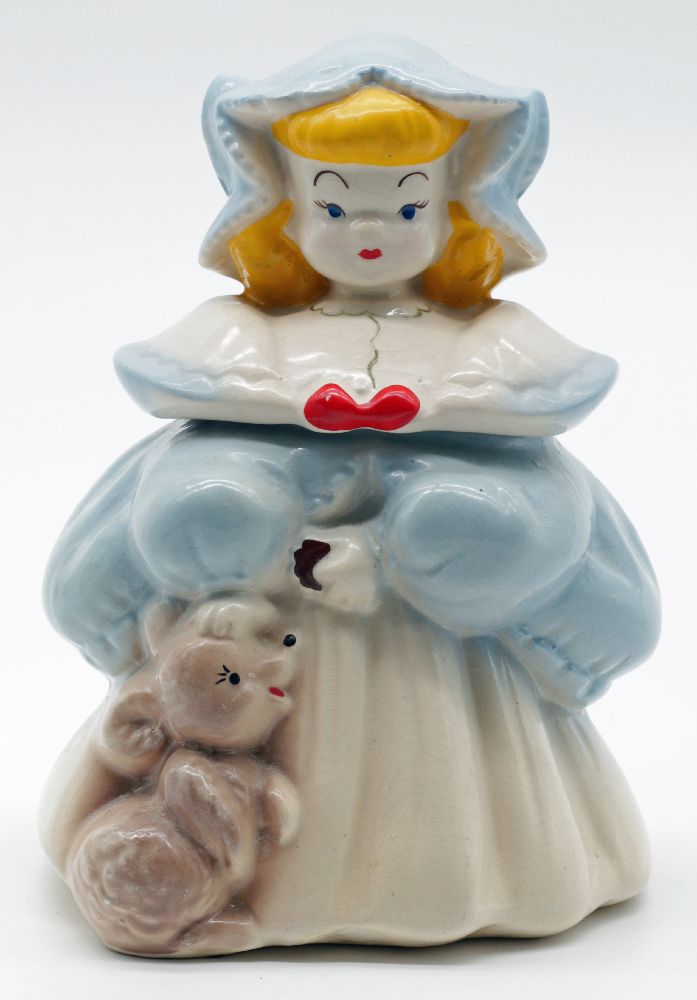Given that authentic vintage cookie jars may have considerable value, and given that reproductions and fakes do not cost a great deal of money to make, it is no surprise that the fakes abound and that unscrupulous dealers peddle them as authentic. We describe one example which is fairly common – the Goldilocks cookie jar.
have considerable value, and given that reproductions and fakes do not cost a great deal of money to make, it is no surprise that the fakes abound and that unscrupulous dealers peddle them as authentic. We describe one example which is fairly common – the Goldilocks cookie jar.
This cookie jar is a fantasy piece – it was not made by the company purported to have made it – McCoy Pottery. There are obvious clues that it is a fantasy jar – one that was never made but imagined to have been made by the hucksters making it.
The most important clue is the maker embossed on the underside – Brush McCoy. Technically and legally speaking, there was never such a company. Brush-McCoy, however, operated from 1911 – 1925 but it never made cookie jars. Its successor company, Brush Pottery Company, introduced cookie jars in 1929.
Stylistically, the Goldilocks cookie jar does not conform with 1910s/20s designs and should thus be dismissed as a Brush-McCoy product. But neither that consideration, nor the one above, prevents hucksters from insinuating that the cookie jar is from the 1920s. Other fraudsters allege a 1940s dating while yet others claim 1960s. Guess as much as they want, none of them has accurately admitted that the jar was most likely made in the 1990s or later.
This introduces a bit of a complication because the jar now has a little bit of age in its own right, and may be perfectly collectible, especially to those who know what they are getting.
Another consideration about these Goldilocks cookie jars is the price. The majority of them are priced between 40-80 dollars, which is too low for even a 1960s example – and simply absurd for a 1920s jar.
The last notable consideration is the glaze, which on the “Brush McCoy” jars is too flat or matte. A period example from the golden age of cookie jars – c. 1930 – 1960 – would be glossier.
If you have one of these cookie jars, enjoy it for what it is, and if you are a dealer, sell for what it is.
